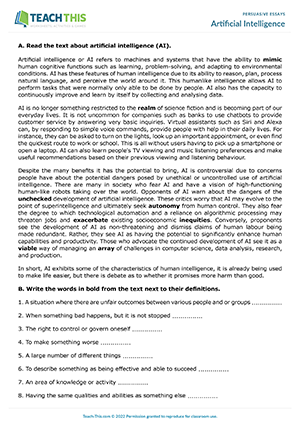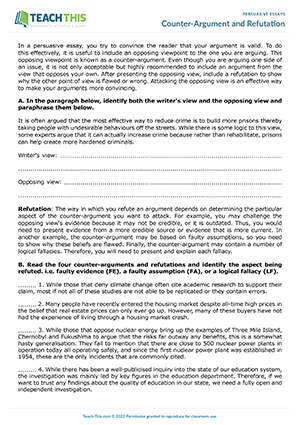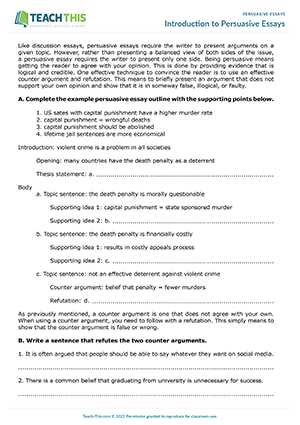EAP Persuasive Essays Worksheet - Reading and Writing Exercises: Matching, Writing Sentences, Identifying, Paraphrasing, Writing an Outline and Essay, Peer Review
In this comprehensive persuasive essays worksheet, students learn about persuasive essay structure and attempt a persuasive essay writing practice... read more
EAP Persuasive Essays Worksheet - Reading and Writing Exercises: Matching, Writing Sentences, Identifying, Paraphrasing, Writing an Outline and Essay, Peer Review In this comprehensive persuasive essays worksheet, students are introduced to persuasive essay structure and attempt a persuasive essay writing practice. Students begin by reading a brief description of persuasive essays. Students then complete an example outline for a persuasive essay by placing four supporting points in their correct positions. Next, students write refutations to two counter arguments. After that, students review their knowledge of paraphrasing in pairs, sharing their understanding of the term and some useful paraphrasing techniques. Students then read an example persuasive essay about the four-day working week and answer questions in which they paraphrase information from the text. Students then move on to read a persuasive essay question and create a basic outline to assist them in writing a well-structured essay. After finishing the outline, students write a complete essay. Afterwards, students swap papers with another student, read their essay and use a provided checklist to give constructive feedback. show less




